Espresso Tips & Tricks
by Jeanette Kierstead
So you've decided to take the plunge and become a home barista.
You've seen baristas at your local coffee shop making your espresso, and you figure "Hey, that doesn't look so hard!"
Contents
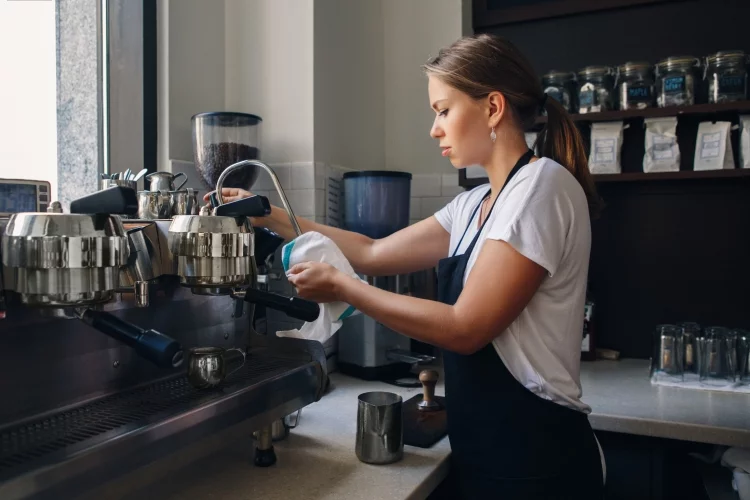
So you've got your favourite beans, you've got your new espresso machine plugged in, and you're ready to go! Your goal is to start pulling shots of espresso that are no less than amazing.
The truth is, its not that easy to make great shots of espresso right out of the gate. Buying the right equipment is half the battle, but using it properly is the other half. In this article, we're here to offer some espresso tips and tricks that will definitely up your espresso game.
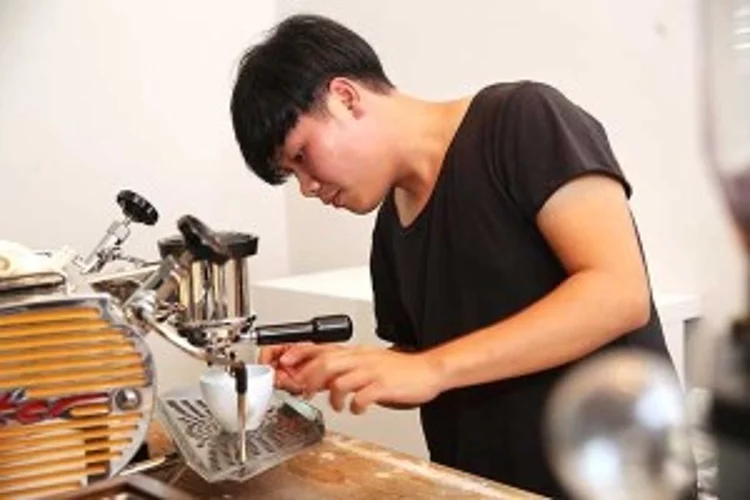
Complexity
Everyone has a different palette, and so different coffee flavours are going to appeal to different people.
If you look at the chart below, you will see that there are so many different flavour notes that can be found in coffee and espresso, with some being quite surprising to beginners.
Great espresso shots have a certain complexity to them.
Many would argue that the finest espresso shots are never just one-trick ponies - they have a depth of character that takes you on a journey as you drink it.
Experienced baristas can pull a shot of espresso that could be comparable to a symphony, taking you through various stages and then arriving at a climax at the end.
Of course, if you're new to espresso, don't expect your taste buds to be able to pick up everything all at once. You're going to have to train your taste buds to do that!
Blends

One way to make an espresso with a complex flavour profile is to use blends of different beans which feature different tastes. For instance, you could blend together Ethiopian Natura, Brazil Yellow Bourbon, and Sumatra Lake Tawar beans to achieve a unique flavor profile you wouldn't get from just one type of bean.
With the Sumatra you get a nice depth of flavour and a note of spice, whereas with the Ethiopian bean you get a very polarizing fruity flavour, which people either love or hate, but it does get your attention. "Hmm…what was that?" The Brazilian bean offers a great base for the espresso itself which has hints of milk chocolate and citrus. Again, this is just one example of an espresso blend.
It is worth noting that when you are picked out a blend of espresso beans, not all blends are going to be to your liking.
In fact, you're going to have to go through a few different bags before you start realizing what blend of coffee beans you like the best.
You simply can't throw together any type of beans and expect the magic to happen; you need to know what each bean offers to bring the flavour together like a good recipe.
While this does sound like quite a bit of work, the rewards, we assure you, are great.
Fresh Beans
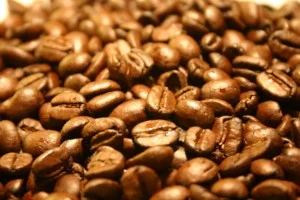
Yes, flavour is one thing, and the freshness of your beans is another. The freshness of the bean (and the grind), to a barista, if of utmost importance.
Bestselling Whole Espresso Beans
Something you should be aware of is the "roast date" on the bag, because coffee is a perishable.
We would go as far as to say that you do not want to buy any coffee unless it has a roast date clearly labeled.
Once the beans are roasted you only have so much time to grind them and use them, and the quality of the flavour is really going to depend on this.
You should always avoid bags of coffee beans which have an expiration date, as this is not the same as a roast date and it means you are dealing with beans that have an unknown roast date.
Buying locally is the best way to get fresh coffee beans.
Sometimes you can ask directly when the beans were roasted, which is a plus.
Buying from big chain stores simply will not do, and once you buy them, please, don't leave them up in your cupboard, unless you have it in an airtight container, such as a coffee vault, in order to maximize freshness.
Fresh Grinds
To make great espresso at home, having the right coffee grinder is imperative. Indeed, your coffee grinder is the basic piece of coffee equipment that you will need in order to have a chance at making good espresso at home.
When you're buying your coffee equipment, we think a good rule of thumb is to allocate half o your budget to getting the right grinder, because it is that important. When it comes to making great espresso, pre-ground coffee is not the way to go. Grinding it yourself, and correctly, is the best plan.

If your plan is to make espresso on a daily basis, you'll need to get a grinder that has the ability to grind specifically for espresso. You might think that this kind of grinder would cost you an arm and a leg, but that's not necessarily so. You just need to do a bit of research to find out what grinder are made for espresso-grinding. They're not all expensive, some can be manual burr grinders with a leaning towards finer grinds needed for espresso brewing.
=> Click here to read our post on the Top 5 Espresso Grinders For Making Espresso At Home
Espresso Tips
Always make sure you start with a nice, clean and dry porta-filter .
Each time you put coffee grinds in your porta-filter and start using your coffee tamper, it should be as if you're starting anew. Dirty equipment, without exception, is the enemy of good espresso.
With porta-filters, its all about finding the right size. If your porta-filter and tamper don't match, you will have problems with consistency which will lead to channeling, so making sure they do match is important.
=> Click here to read more about "bottomless" porta-filters, which are one of the preferred types used today
Do not use harsh soaps to clean any your espresso-making equipment, as it can taint the flavour as well. When cleaning your equipment, the goal is to break down the old oils that hang around after using your equipment, and fully eliminate them. This will prevent any kind of impurities from tainting the flavour of your espresso. There should be no contact with old oils or any other residue from a previous brewing session.
Also keep in mind that once the coffee beans are ground, those tiny granules of espresso will start to oxidize immediately, so you'll want to use those grinds ASAP.
Think of an apple or banana once they're exposed to the air. In less than a minute, they're turning brown. Now think of tiny coffee granules. They oxidize at a much faster rate, so using them as soon as possible is going to give you maximum freshness.
We also recommend that if you're in love with good coffee to pick yourself up a gram scale which won't cost too much if you get one on Amazon . This way you can "dose" properly, getting that perfect ratio of 2 tablespoons of coffee for every 6 oz of water.
Gram scales are also handy for baking, so you can use them for other purposes as well. Having a gram scale will help you to increase your knowledge of the espresso making process, and will lead to better shots if you use it correctly, so its well worth getting.
Espresso Tamping
We mentioned tamping already, but there's actually a lot to tamping that's worth knowing about if you feel you might want to get serious with your espresso.
For instance, if you get yourself a new espresso machine, it will often come with a cheap plastic tamper. Should you use it? Sure, but it is not the ideal tamper by far. As we said in regards to the porta-filter, if the tamper size does not match it or if it isn't able to "tamp" effectively, then we would recommend upgrading to something more suitable. Choosing the right tamper is all about finding the perfect fit. Not just for your porta-filter, but for yourself as well. Some people spend years looking for just the right tamper.
=> Click here to read our article, "Buying A Coffee Tamper - Which Is Best?"
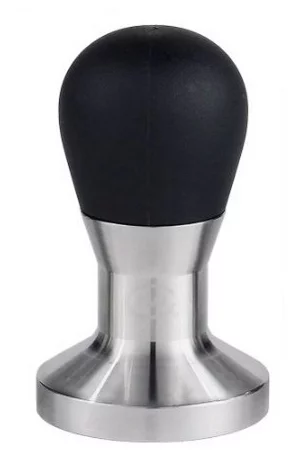
After all, if you've invested in an espresso machine, you may as well invest in a proper tamper so you don't have a disproportionately good espresso maker / not-so-good tamper. The plastic tamper that comes with is more of a courtesy than anything, usually, so giving thought to buying a good tamper is worth it.
Also, what you risk if you do simply go with your piddly plastic tamper is having an inconsistent espresso "puck", which won't be packed down properly, and will lead to channelling. Channelling, in turn, leads to bad-tasting espresso. The tamper you need is one that can create a nice, level tamp and can effectively apply the right amount of pressure to get a perfect tamp.
=> Click here to read our article called "How To Tamp Espresso Like A Boss" to learn to tamp like a pro
Pulling Shots
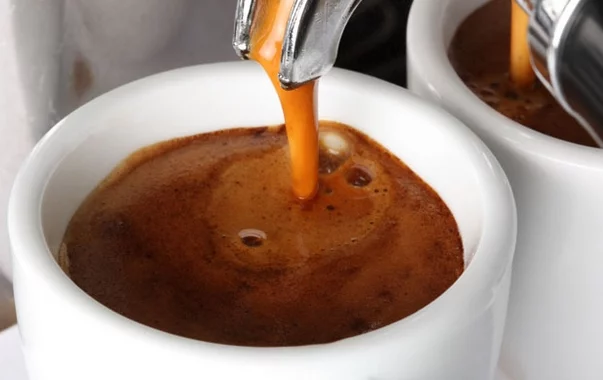
A few tips on pulling shots of espresso…remember that it takes maybe 5-7 seconds for your espresso to start drizzling out and into your drinking vessel. Each time you do it, depending on the tamp consistency, the density of the puck, and the type of ground espresso you've used, it will be always be a little bit different.
If you are new to this process, you will start to notice all sorts of intriguing phenomena. For instance, you will start to notice that as the espresso starts pouring out, it changes in colour and thickness. It might start out a deep dark colour, and end up a light blonde. You might get more crema, or perhaps less.
All of these things are part of the "story" of your espresso. You can gain some insight into what you're about to taste by watching what happens during the pull.
Don't forget to pre-heat your demitasse espresso cup so as not to "shock" your espresso. When the cup is at a radically different temperature from the espresso, this too can alter the flavour. For a beginner, you might say "Are you serious?" Oh yes, all of this is quite par for the course.
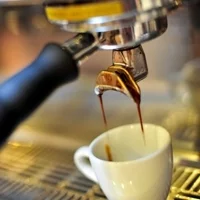
=> Click here to read our review of some of the best demitasse espresso cups
How To Taste Espresso
Before you taste your espresso, remember that its piping hot! You do want to drink it while its hot, but not so hot as to burn yourself. If you wish, you can do a light swirl of your cup to even everything out.
We go with a three-sip method, which we think is one of the best ways to experience your espresso.
Each time you sip it, you will ideally be taken on a little flavour journey which is different with every sip, leading up to the big "finish".

With practice, you will detect the different complex flavours and begin to be able to describe them better and better, seeming ever more like a true expert as you do so.
If your espresso is around the same temperature as your tongue (where many taste buds are located), it will taste better.
You can always tell if espresso, or coffee in general, is bad because if it cools off a bit and you find that it tastes not-so-good, this can mean that the undesirable flavour was masked by the heat somewhat.
Remember too that espresso is a complex drink and isn't necessarily meant to taste simple. As we mentioned earlier, great espresso should be complex, similar to better wines and you could even compare it to whiskey or brandy.
One expression some baristas use is "chasing the grind", to describe not being fully in synch with their espresso-making that day. You don't want to be in this position, if possible. You want to find that tasty groove!
Wrapping things up here, we hope this article was helpful to any newcomers to the espresso world. Its often lifelong learning process, so we're happy if we could assist you in any way! Thanks for reading!
MORE FROM OUR SITE
Related Posts
 |
 |
 |
 |

About Jeanette Kierstead
Jeanette has been testing and reviewing kitchen appliances for over six years now, so she knows her stuff when it comes to finding the best ones. In her spare time, she loves nothing more than baking cakes and cookies – especially if she can do so with one of her favorite stand mixers! When she's not in the kitchen, Jeanette is usually looking after everything homes-related; from garden tools to smart home products.
Thoughts on "Espresso Tips & Tricks"
 |
 |
 |
 |
Get FREE Coffee Gifts now. Or latest free grinders from our best collections.
Disable Ad block to get all the secrets. Once done, hit any button below
 |
 |
 |
 |